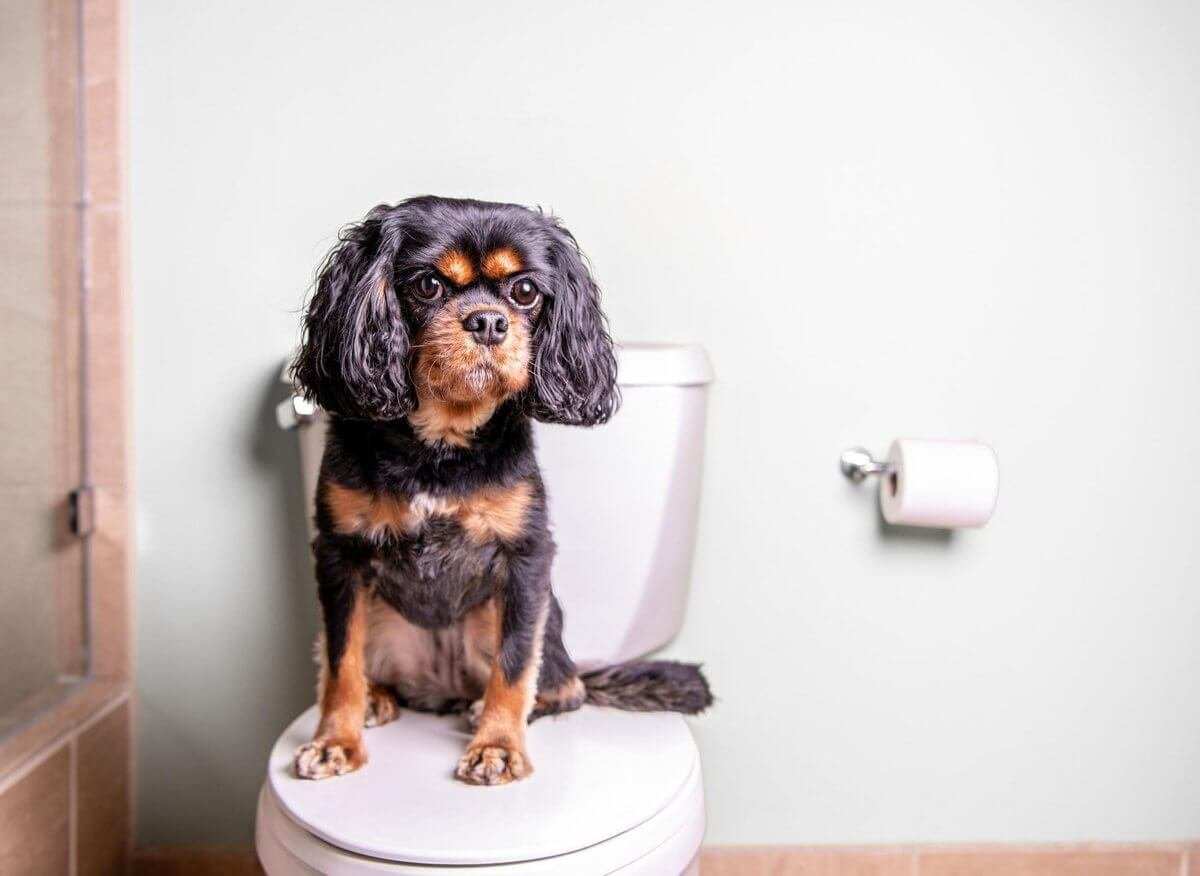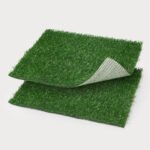What Are Pee Pads and Litter Boxes, and How Do They Differ?
Pee pads and litter boxes are both popular options for pet owners looking to provide their furry friends with a designated spot for elimination. However, other options, such as grass patches or porch potties, serve the same purpose. Dog potty grass or grass patch for dogs is an excellent option for pet owners who want to provide their dogs with a natural and comfortable environment to relieve themselves. Unlike indoor dog potty or dog toilet, grass patch for dogs provides a similar experience to going outside and offers the added benefit of being a more eco-friendly solution. In contrast, pee pads and litter boxes are better suited for pet owners who want a more convenient and easier-to-maintain option.
While they may not provide the same natural experience as grass patches or dog potty grass, pee pads, and litter boxes offer a more hygienic and practical solution for pet owners who live in apartments or houses without access to outdoor spaces. How to determine which type of dog potty is right for you and your pet: If you live in an apartment or house without outdoor space: A grass patch for dogs is the best option for pet owners without outdoor spaces. Grass patch provides a natural experience and helps with many aspects of your pet’s health. This type of dog potty is helpful for large dogs as the grass patch offers a more extensive area to cover their waste, leading to easier clean up.
Grass patch is also more hygienic and practical for pet owners in apartments or houses without access to outdoor spaces. A dog litter box is a viable option for pet owners who live in apartments or homes without access to outdoor spaces. A litter box offers an alternative to a grass patch, which provides a good solution for smaller dogs or those that don’t need as much room. Litter boxes are easy to clean, provided you take the step of cleaning them regularly. For people with short-term plans: Pee pads are the most convenient option for short-term dog potty needs. Pee pads are used to train you.

Exploring the Pros & Cons of Using Traditional Potty Training Techniques Vs. Using Pee Pads
When it comes to potty training your dog, there are many options available to pet owners, including traditional techniques and modern alternatives such as pee pads and grass patches. Traditional potty training methods typically involve taking your dog outside regularly and waiting for them to go. This method can be effective but requires a significant time commitment and access to outdoor spaces. Alternatively, indoor dog potty options such as pee pads and grass patches provide a convenient solution for pet owners who live in apartments or houses without outdoor access.
Pee pads and grass patches offer an easy-to-clean option but may require more maintenance than traditional potty training.
Additionally, training your dog to use indoor potty options may take longer and must be clarified when transitioning to outdoor spaces. Overall, each option has its pros and cons, and pet owners should consider their lifestyle and preferences when deciding on the best potty training method for their furry friend. In summary, pet owners should consider the size of their yard and the distance between their house and outdoor space when deciding on a potty training method for their dog. Traditional Potty Training: One of the most common potty training methods is using a crate, which can be used as an indoor or outdoor potty.
The size and structure of your yard and where you will keep your dog (e.g., backyard) should also be considered when deciding on a traditional potty training method. Pee pads and Grass Patches: This is generally the most accessible type of potty training and will require less maintenance than conventional methods. The pad or patch should be placed within your dog’s reach and cleaned regularly. Indoor Potty Training: This method typically takes longer to train but could cause confusion when transitioning to outdoor spaces. Additionally, if you cannot clean up the messes your dog creates indoors, this method may only be ideal for some.
Can Dogs Transition From Using a Pee Pad to a Litter Box Without any Training or Adjustment Period?
Dogs are creatures of habit, and changing their potty routine can be challenging. If you’re considering transitioning your dog from using a pee pad to a litter box, it’s essential to understand that some dogs may require training and adjustment periods. However, the transition can be made smoother using familiar materials such as grass patches or dog potty grass in the litter box. Additionally, introducing your dog to the new environment, whether a porch potty or indoor dog potty, can help reduce anxiety and confusion. Positive reinforcement training can encourage your dog to use the new potty option. It’s essential to remember that not all dogs will transition easily and may need a more extended adjustment period.
Consistency and patience are crucial when making any changes to your dog’s routine, and with time and effort, your furry friend can learn to use a litter box just as they would a pee pad or grass patch. What is a “dog potty?” A “dog potty” is simply any surface your dog uses to relieve himself. Many options include:
- Your lawn or yard.
- The ground in your garage.
- Other joint surfaces like a concrete parking lot.
Where should I place my dog’s potty? It would help if you encouraged your dog to relieve themselves in an area where they feel safe and can be easily monitored. Generally, the more secluded and less accessible the location, the better. What are my options for litter boxes?
Several litter boxes are available for purchase, or you can make your own. You’ll want to consider a plastic container with low sides that won’t collect too much urine and any soft surface on your pet’s paws. If your furry friend is easily discouraged, consider using multiple litter boxes in different rooms. Or locations. Some options include:
- Scoopable litter boxes: These are made for easy clean-up and allow you to dump the waste into a plastic bag without touching it.
- Disposable litter boxes: These are made of disposable materials that can be thrown away after use.
- Automatic litter box systems: They’re typically used with clumping litters, but they also come in Scoopy styles as well as standard sizes .
- Litter boxes with long-lasting scoops: These models have a knowledge that stays in place, so you don’t have to worry about it falling into the litter.
- Litter mats: They’re typically made of fabric that can be thrown away or composted, and they come in a wide variety of colors and patterns to fit your home decor.
- Liners: These are reusable options that can be put inside standard boxes for extra protection from odor or for use during training periods (such as when your pet is just learning where the litter box is).
- Litter pellets (pellet litter): These are clumping forms of waste that you typically use in automatic litter boxes. They can be mixed with other scraps for areas that have specific needs, such as odor control or urine absorption.
- Cat litters: Different formulas for different types of cats and kittens, including clumping and non-clumping options from which to choose.

What are some Tips for transitioning from a Puppy Pad to a Doggy Litter Box?
Transitioning your puppy from using a pee pad to a doggy litter box can be a challenging task, but it is achievable with some preparation and patience. First, choosing the right type of litter box is essential, whether it be a porch potty, indoor dog potty, or grass patch for dogs. Familiarizing your puppy with the new environment and materials can help reduce anxiety and confusion. Positive reinforcement training can also be effective in encouraging your puppy to use the litter box. Gradually decreasing the size of the pee pad and placing it inside the litter box can help your puppy recognize that the litter box is the new designated potty spot. As your puppy becomes more comfortable using the litter box, you can remove the pee pad altogether.
Consistency and patience are essential in ensuring a successful transition from a puppy pad to a doggy litter box. Remember to reward your puppy for good behavior and avoid punishing them for accidents. With time and effort, your puppy can learn to use the litter box just as they would a puppy pad or grass patch. If you and your family are looking for a way to help keep your furry friend safe and healthy, the Doghouse by PUR is the perfect solution. The fully-enclosed design of our indoor dog potty is a must for those with allergies or small children who might be curious about what their dog does in there.
The dog potty is ideal for those looking for a covered spot to take care of business and those with small children with allergies. This dog potty has rubber flaps on the doors and a high-quality plastic top that can be easily removed for thorough cleaning. For small dogs, we recommend using a step stool to keep your furry friend safe while they are in the doghouse. You might also like Dog Potty for Small Dogs with Step Stool. For small dogs, the high-quality plastic top is easily removed for thorough cleaning. This dog potty has rubber flaps on the doors and a high-quality plastic top that can be easily removed for thorough cleaning. The doghouse is ideal for those looking for a covered space to take care of business and those with small children who have allergies.


